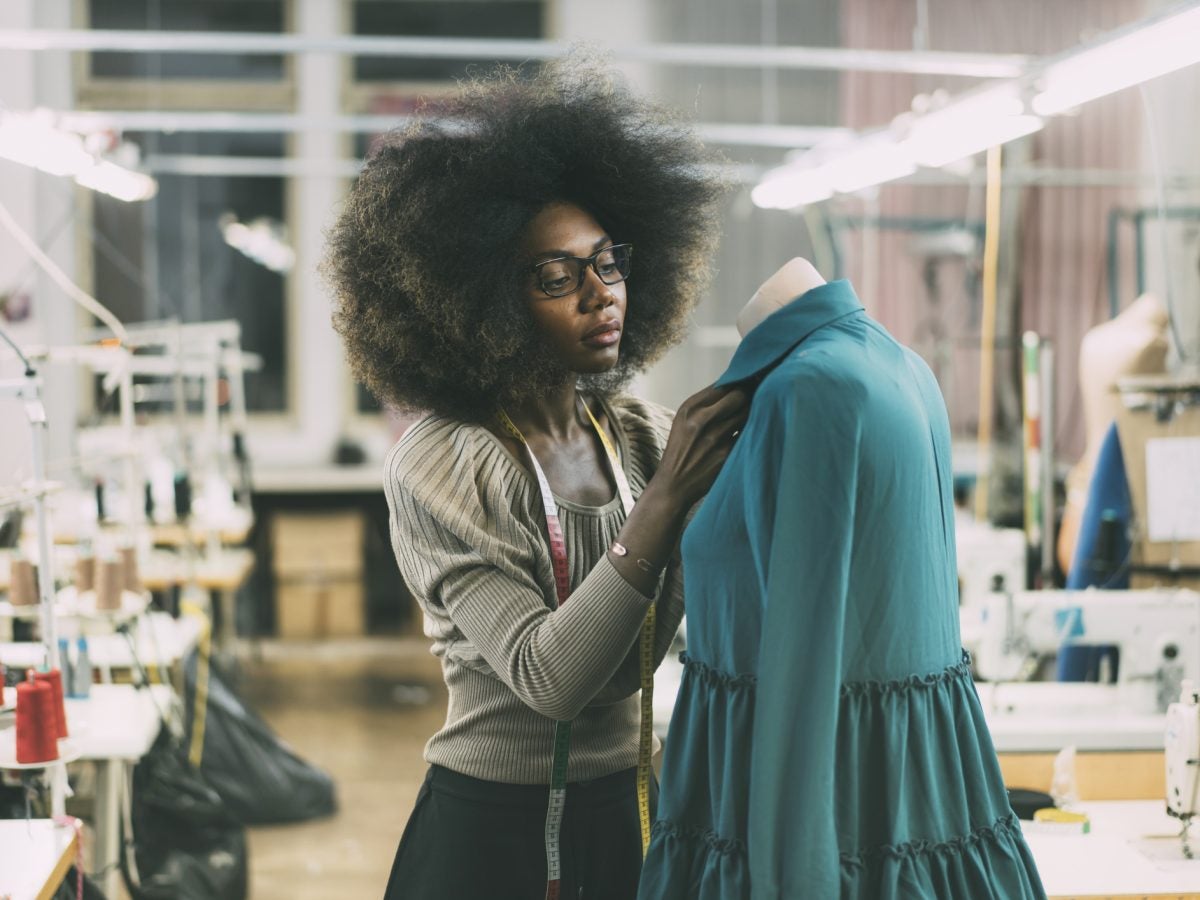
Fashion’s most important month has drawn to a close, but the topic of style identity is top of many minds as “quiet luxury“ and “trendy vs. timeless” social media conversations continue racking up views. One of the most critical tips digital influencers espouse is the power of the fit—an altered piece of clothing that skims the body flatteringly, and elevates your look. Thanks to this renewed interest across digital communities, the art of seamstressing is finally gettings its just due. As this The Knot piece by Esther Lee points out, there are only around 45,000 working tailors in the US despite a deep interest in fashion (the industry is valued at approximately $343.70 billion). However, the practice is not dead—in fact there are Black women keeping it alive. Take LaTricia Brown for instance, lead stylist and master Tailor at Trish B. Stylin’ Design & Alterations and a member of The Stitched Collective who for more than a decade, has helped outfit people from all walks of life. She sat down with ESSENCE to share more about the tailor renaissance, and what she sees for the future of the space that’s been around for hundreds of years.
How did you find yourself getting into seam-stressing?
I got into the seamstress industry purely out of defiance toward my father! In high school, I was trying to leave the house in an outfit he found unsavory and he made the mistake of telling me, “When you make it, you can wear it.”

I asked for a sewing machine for Christmas, taught myself to sew, and from then on I started altering my own clothes, made my prom dress with the guidance of a designer out of Cincinnati whom I interned with and from there I attended Savannah College of Art and Design otherwise known as SCAD- the University for Creative Careers.
How long have you been in the profession?
I will say I did not gain the majority of my alterations knowledge at SCAD. I did however get my first job as an alterations specialist with David’s Bridal in 2009. I later became the alterations manager in 2014 and from there I decided I desired more time with my growing family. I built a client list doing work on the side of Executive positions in retail, until I finally got the nerve to do it full time on my own in 2017, Finally getting my studio in 2019.
Why do you think the space has declined in popularity in recent years?
“I would go so far as to say there are two main reasons there’s been a steep decline especially in the last two to three years. In my opinion one of those reasons was COVID-19. Many of the seamstresses I worked alongside or sent referrals to were of an advanced age, 65+. This demographic was unfortunately greatly impacted by the high mortality rates of the virus. Many of the seamstresses I knew with shops closed when the country shut down, and unfortunately many did not survive the 2yr hiatus that much of the wedding and event industry went through, ultimately, closing many seamstress businesses down.
The second reason I would suggest is because the industry is not popularized or valued in universities. I was taught how to make garments impeccably well. My knowledge gained did not emphasize fixing fit issues. It centered around making the garment so it did not need to be altered. With that mindset, the topic of alterations tends to be glazed over as the industry focuses on – “design a beautiful garment, alterations are someone else’s problem”
According to “The Dying Art of Seamstresses” article from The Knot, The Trump Administration’s immigration policy influenced the availability of labor across many industries, and the results are playing out years later. The steady influx of seamstresses from China, Brazil and other countries provided a reliable supply for decades and the decision to tighten borders stunted the availability of green cards and working visas across industries. Some argue that the point of restricting immigration was to give jobs to Americans. But therein lies the issue. The lack of skilled American labor, coupled with reduced inbound talent, is creating a void. Some immigrants were trained in stitching from a young age, and it is rarely taught in US schools. Finding skilled labor is significantly more challenging without immigrants. Then there’s also the issue of sourcing new and young talent.
And now, why is it important to keep the profession alive? How are you doing that?
It is imperative that we reignite a love for the seamstress industry for multiple reasons- there will always be a need to make garments fit. Covering our bodies is not optional in our society so when it comes to presenting yourself in the best light, a poorly made jacket, or ill-fitting wedding gown will always have a more negative impact than if you had the garment tailored for your specific proportions or gown custom made.
WE are a NEEDED luxury service, whether people acknowledge it or not. WE are a service that people use because they NEED the skills we provide.
This is interview has been edited for clarity and brevity.

